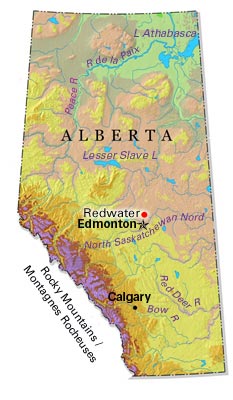Jasper, Alta, incorporated as a specialized municipality in 2001, population 4051 (2011c), 4265 (2006c). The Municipality of Jasper is located at the junction of the Miette and Athabasca rivers in Jasper National Park, 362 km west of Edmonton. The municipality of Jasper, created by the province of Alberta 20 July 2001, assumed responsibility for specific jurisdictional matters from Parks Canada on 1 April 2002. First called Fitzhugh, it was named after Jasper House, a nearby North West Company post, and acted as a supply depot for the mountain trade across Athabasca Pass. Possibly established as early as 1801, it remained open with occasional interruption until 1884.
Its modern development can be said to have started in September 1907, when the Jasper Park Reserve was established. Tourism in Jasper began as early as 1915, and the first major hotels, the Athabasca and the world-famous Jasper Park Lodge, opened in 1921 and 1922 respectively. The coming of the Grand Trunk Pacific and Great Northern railways (1911-12) and construction of the all-weather road to Edmonton by late 1936 spurred Jasper's growth, not only as a tourist town, but also (from 1912 to 1916 and again after consolidation of the two rail companies in the 1920s) as a railway divisional point.
Today as the hub of Jasper National Park, a World Heritage Site, Jasper continues its role as a major modern transportation and tourist community. It is a major skiing and summer recreation destination and departure point for the Banff-Jasper Highway as well as the Yellowhead route, which connects Canada's northern prairie communities with the West Coast. Over 2 million people pass through the community annually.

 Partager sur Facebook
Partager sur Facebook Partager sur X
Partager sur X Partager par Email
Partager par Email Partager sur Google Classroom
Partager sur Google Classroom









